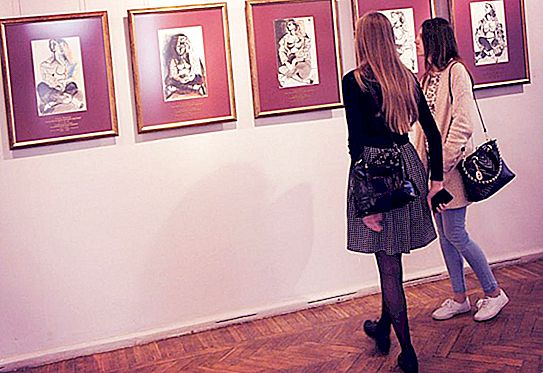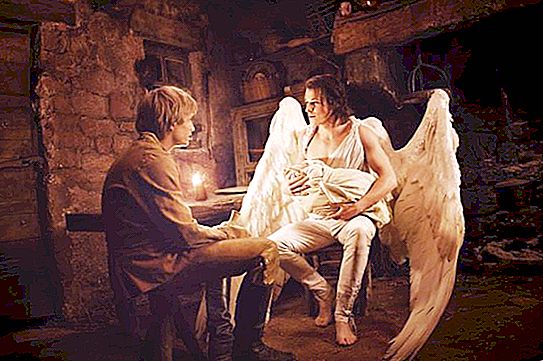The Orel Museum of Fine Arts officially took place a little over 60 years ago, but collection work has been going on since the late 19th century. Today the museum has a small permanent exhibition where paintings, sculptures and other works are presented.
Public Museum
At the end of the 19th century, provincial archival commissions were formed in Russia. Their task included expert assessment of archival documents of state institutions. The members of the commission decided which papers should be destroyed and what should be preserved. The first organizations appeared in several areas, among the pioneers of the initiative was the Oryol province.
The decision to create commissions was dictated by the interest of society in the history of their country; it was best documented. The collected archives became the starting point for the creation of public museums, subsequently reorganized into local history museums. The scope of activity of the institutions included archaeological excavations, the organization of libraries, exhibition halls, and the collection of ethnographic material.
In the Oryol province, a public museum, with a carefully described exposition, was opened for visits in 1897. The foundation of the meeting was the patronage of the opera singer A.N. Nikolaev, for five years (1898-1903), he handed over to the museum a collection of almost 200 works of art.
After the revolution
The official opening of the Orel Museum of Fine Arts took place on May 1, 1919. The exposition was temporary and made it possible only to get acquainted with the collection of paintings. For a long time, organizational activities took place. In 1925, the united provincial museum was opened with three branches - Turgenev, natural-historical and historical-artistic.
The expansion of the funds of each department inevitably led to further separation, which happened in 1957, on the basis of the collection of the art department of the museum of local lore, an art gallery was opened. A part of the former shopping arcade on Stalin Street was allocated for its placement.
Becoming
Over time, the collection increased, new tasks appeared, scientific activity was actively conducted, the library expanded. The fact that the art gallery is in poor condition, much has been said, but the decision to move was made only in 1962.
The expositions were transferred to the city center, however, the place was again not the best, the site was located on the ground floor of a residential building. The status of the Orel Museum of Fine Arts was given to the gallery in 1990, at the same time there was a move to the current premises.
Description
Today, the Orel Museum of Fine Arts is located on three floors of the former House of Political Education, the building itself underwent a partial reconstruction in 1990 and is a historical monument. Permanent expositions occupy more than 180 m 2, 174 m 2 are allocated for the storage facility. The museum stores over 7 thousand valuable items, which include sculpture, paintings, graphics, works of applied art.
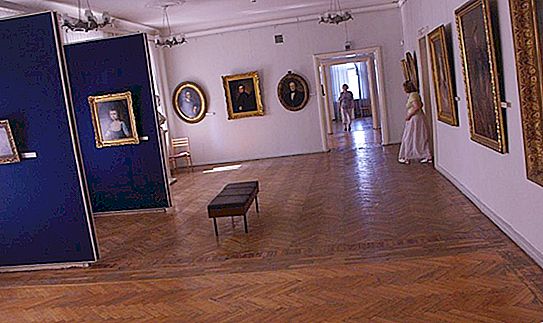
Mass replenishment of funds occurred during the period of nationalization of the property of the local nobility, landowners, churches. From the walls of the exhibition halls, the descendants are watched by the aristocrats of the tsarist era - Kurakins, Skoropadsky, Komarovsky, Stakhovichi, whose family portraits were in the museum during the expropriation period. Unique porcelain, bronze figurines, collections of watercolors, sculptures and other works stored in the estates of local landowners migrated from the estates to the museum halls.
An extensive collection of icons of the 18-19th centuries was collected by the museum staff on expeditions regularly held from 1960 to 1980 of the last century. Spending time on ethnographic trips, employees bought them from residents of neighboring villages and cities, many icons were purchased from Oryol residents. In the Museum of Fine Arts of the city of Oryol, several examples of iconography stand out:
- Collection of Old Believer icons.
- Relief icon depicting Nicholas the Wonderworker (early 18th century).
Branches
The Orel Museum of Fine Arts has two branches that illuminate the life and work of the artist A.I. Kurankova:
- The art gallery, where the works of A. Kurankov are collected. Canvases were created from the mid 40s of the 20th century until 2010.
- Memorial workshop of A.I. Kurnakov. The branch was opened in 2010, in a building of the 19th century, where the artist created his works. In the museum’s collection are Kurnakov’s canvases, as well as the work of his colleagues from the workshop, works of decorative art, personal items of the master, art tools, books, etc.
Excursions are regularly held in the branches, lectures are given on the history of fine art, and the young generation is told about the artist and his works.
Anniversary
At the turn of 2017-2018, the Oryol Museum of Fine Arts celebrated the 60th anniversary of its founding. The administration decided to mark this event with an exhibition of revenues collected over the past decade. A particularly valuable exhibit was Myasoedov’s painting “A man’s head in a wreath of ears” and E. Polenova’s watercolor painting “Path in the Forest”. In total, more than 170 works were presented.
The impressive exposition was collected from the works of artists of the USSR period, which included works by Krymov, Plastov, Demin, the Tkachev brothers, Romashov, etc. Decorative and applied works were donated to the museum - embroidered holiday towels (early 20th century), hand-made carpets and carpet paths work in traditional Oryol technology.
In addition to the anniversary exhibition, other cultural and educational events were held at the Orel Museum of Fine Arts. A lecture by Borisova Irma Ivanovna, the museum’s oldest employee and researcher, was dedicated to the history of women's traditional costume. In addition, the lecture contained a lot of information about the symbols contained in the embroidery of clothing elements. The story aroused great interest among the public and pursued the goal of preserving and popularizing folk traditions.
In addition to an excursion into the history and demonstration of achievements, technical innovations were presented at the anniversary exposition - virtual excursions, an audio guide for modern smartphones and much more.
Exhibitions
Museum of Fine Arts Orel - an active participant in the cultural sphere of the city. Exhibitions are constantly held here, the visitor has the opportunity to see the canvases from the collections or get acquainted with the canvases and artworks of museums in other cities. In 2017, residents and visitors of the city had the opportunity to see authentic paintings by Picasso and Dali, engravings by the brilliant Gustave Dore, paintings by Russian and Soviet artists.
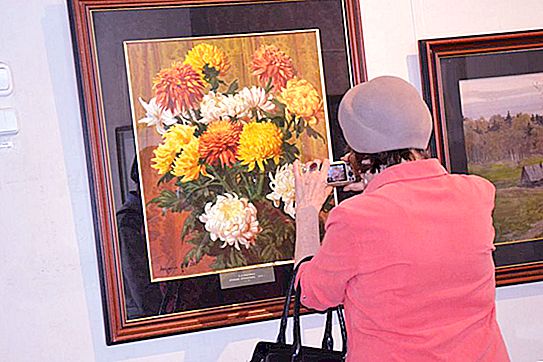
One of the interesting exhibitions was the exposition “Feminine” of the Orel Museum of Fine Arts. It was provided by the family of Marina Politova, where three generations of women with pleasure and knowledge collected dolls and accessories. In total, more than 800 items are in the family meeting. The “oldest” doll was published in 1830.
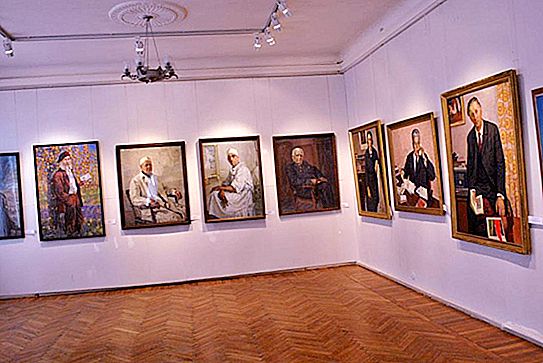
In addition to interior dolls, doll furniture, dishes, clothes were presented at the stands. The family collection consists of antique, rare, author's dolls, there are products of mass Soviet and European production. The exhibition was visited by girls of all ages, many recognized their favorite toys of their childhood. Visitors who shared their impressions told that the exposition is very emotional and it is not clear what feelings it caused more - nostalgia or admiration.
At the very beginning of 2017, the exhibition “Reflection” was successfully held. Museum of Fine Arts Orel invited connoisseurs of contemporary illustration to get acquainted with the works of animal artist Sergei Stroganov. Working in the style of hyperrealism, the author created vivid images of animals to the fables of Aesop and Lafontaine. The presented works were painted with colored pencils and conveyed a full range of human emotions, reflecting the ups and downs of the heroes of satirical fables.
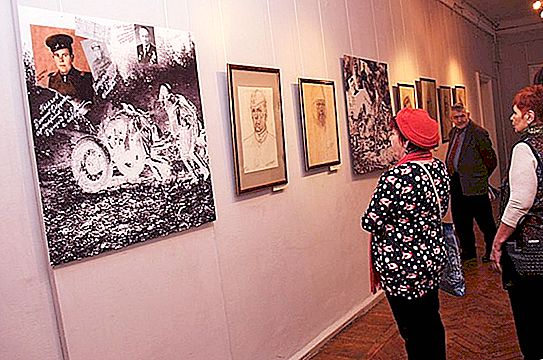
Reviews
The Orel Museum of Fine Arts received positive reviews for the high activity of the exhibition. Residents of the city say that they managed to discover many artists. Pleasant surprises were the exhibitions of local craftsmen, curious were small, but vivid expositions of world classics.
The permanent exhibition, according to some visitors, was unexpectedly saturated, albeit small. Tourists noted that the portrait gallery of local aristocrats and landowners, descended from the brush of unknown artists, vividly displays the character of the heroes of the paintings. Many liked the fact that the collection has amazing scripts - Herman Schnee, “Singing Angels” by D. Brandi, “Romantic Landscape” by S. Rosa and several other works of the classical school in various directions.
Regular visitors regretted that the work of Soviet artists was completely withdrawn from the permanent exhibition. There were not very many of them, but the canvases reflected time, heroes and events of recent history. In each of the reviews left, a collection of sculptures is mentioned, some visitors believe that there are very few works, but they are very successful.
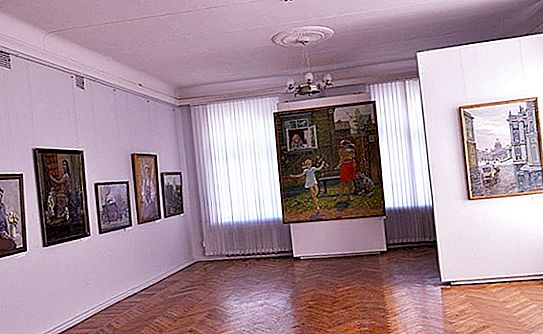
Experts and amateurs agreed that the duet of sailors created from forged copper is a unique work. Few have heard of such a technique, and certainly, most have not come across similar works in other museums. Two marble sculptures by O. A. Kolomiytsev delight. Visitors recommend a visit to the Museum of Fine Arts and take time for a permanent exhibition, and a temporary exhibition there will always be and always worthy.
